 |
 |
 |
| |
Bone Effects of Rosiglitazone in HIV-Infected Patients with Lipoatrophy
|
| |
| |
Reported by Jules Levin
CROI 2011 March 2 Boston
Allison C . Ross, MD1, Todd Brown, MD, PhD2, Corrilynn O. Hileman, MD3, Nesrine Rizk, MD3, Dahlia El Bejjani, MD4,
Marisa Tungsiripat, MD4, Norma Storer, RN3,Danielle Labbato, RN3, and Grace A. McComsey, MD3
1Emory University School of Medicine & Children's Healthcare of Atlanta, Atlanta, GA;2Johns Hopkins University, Baltimore, MD; 3Case Western Reserve University & Case Medical Center, Cleveland, OH; 4Cleveland Clinic
Foundation, Cleveland, OH
BACKGROUND
·Reduced bone mineral density is common among HIV-infected persons and likely leads to an increased risk of fracture
·Medications used commonly to treat co-morbidities in HIV-infected patients may also contribute to the risk of low BMD
·Thiazolidinediones(TZD) are approved for the treatment of diabetes mellitus and have been investigated for the treatment of HIV-related lipoatrophy
·In the general population, TZD are associated with decreased bone formation, increased bone resorption, and increased fracture risk.
·The effects of TZDs on bone metabolism in HIV are unknown.
·We have previously reported that rosiglitazone(rosi) increases limb fat in HIV-infected patients receiving thymidine-sparing regimens.
·In this planned analysis, we sought to determine the effects of rosi on bone metabolism of HIV-infected subjects.
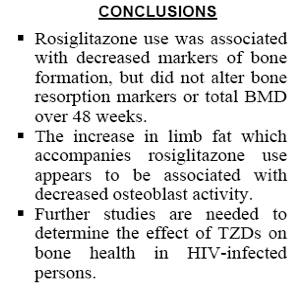

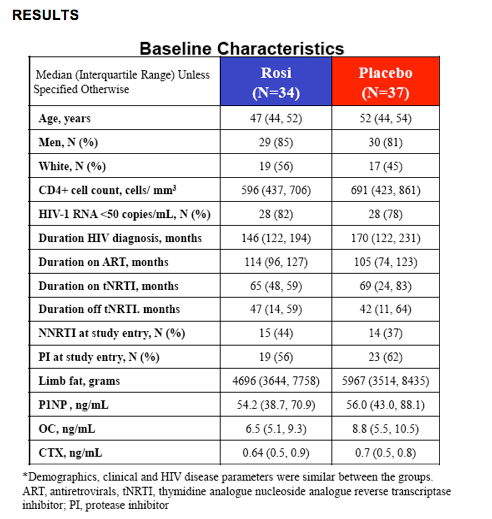
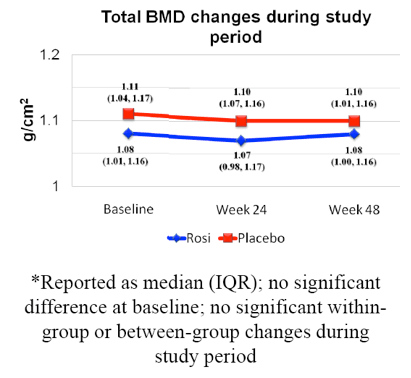
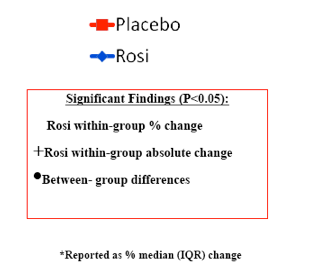
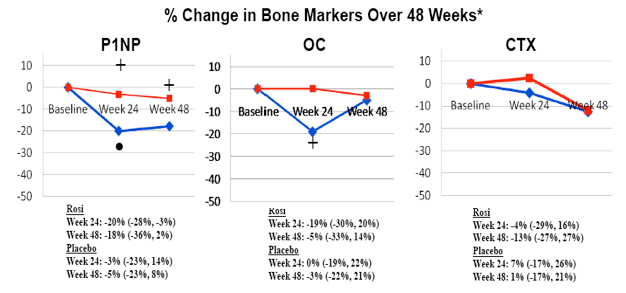
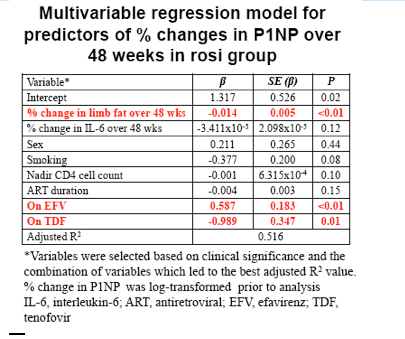
|
| |
|
 |
 |
|
|